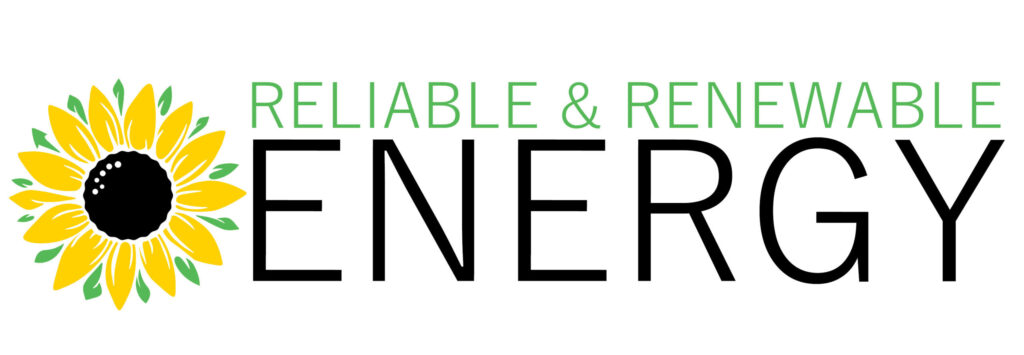Solar Panels and Their Energy Production
What is the first thing that pops up when you think of a solar panel function? Among the first few will be energy production. That is singlehandedly the most vital role of a solar panel.
Every solar panel company usually has an approximate cut-off for how much energy they require the panels to produce. It can be 100% or 50% of the needs, depending on where they are installed. Some factors influence solar panel energy production and determine the efficiency, capacity, and number of solar panels required for all possible spaces.
In the past decade, solar panels have become an everyday necessity for homes, offices, schools, hospitals, etc. It is essential to equip oneself with information regarding solar panels and how they function to produce energy. In this post, we will explore the science behind how solar panels generate electricity from sunlight. We will also discuss some of the most common uses for solar energy and how it can help reduce our dependence on non-renewable sources. Let’s go over the basics, so it is easy to understand them better.
What Is Solar Energy, and How Is It Produced?
Solar energy is a clean and renewable energy source that can power homes, businesses, and even entire cities. Solar panels are the main component of a solar energy system and are responsible for converting the sun’s energy into electricity. But how exactly do solar panels produce energy?
It is created when sunlight is converted into electricity directly using photovoltaics (PV) or indirectly using concentrated solar power (CSP). Photovoltaic cells (PV cells) convert sunlight into electricity. They are made of unique materials called semiconductors that absorb sunlight and create an electric field across the layers. When the electrons move through this electric field, they create an electric current. This direct current (DC) can then be converted into alternating current (AC), which is mainly used for most electrical connections.
Basic Terms Used In Solar Panel Functions
The common key solar panel terms used are kW (kilowatt), kWh (kilowatt-hour), DC (direct current), and AC (alternating current).
kW (kilowatt) is a unit of power typically used to measure the output power of a solar panel or system. It refers to the amount of energy generated at a given time. The electrical energy generated by a solar panel or system can be expressed in watts or kilowatts.
kWh (kilowatt-hour) is a unit of energy typically used to measure the amount of energy consumed or generated over a period of time. It is the amount of energy consumed or generated by a 1 kW power source for one hour. The kWh is used as a billing unit for the energy consumed by individuals. One kilowatt-hour equates to 3.6 megajoules.
DC (direct current) is an electrical current that flows in one direction. Solar panels produce DC power, which is converted to AC power (see below) before it can be used in most homes and buildings.
AC (alternating current) is an electrical current that changes direction periodically. This is the type of power that is typically used in homes and buildings and is what is delivered to the grid. So, DC power produced by solar panels is converted to AC power for use in homes and facilities or to feed into the grid.
Solar Panel kWh Production
The amount of kWh that a solar panel produces depends on several factors, including the size of the panel, the efficiency of the panel, and the amount of sunlight that the panel receives.
On average, a typical solar panel with a capacity of 250 watts will produce about 1,500 kWh per year if it receives an average of 5 hours of direct sunlight daily. This is an approximate value; the actual product may vary depending on many factors, like location, weather, shading, and the condition of the panel.
It’s also worth noting that the amount of electricity produced by a solar panel also depends on the angle and orientation of the panel, as well as the location and weather conditions of the area where it is installed.
Types of Solar Panels
Monocrystalline silicon solar panels, also known as single-crystalline silicon solar panels, are made from a single silicon crystal. They have the highest efficiency among all types of solar panels, with some reaching efficiencies of over 20%. They also have a longer lifespan and perform better in high-temperature conditions than other solar panels.
Polycrystalline silicon solar panels, also known as multi-crystalline silicon solar panels, are made from multiple silicon crystals. They are less efficient than monocrystalline silicon solar panels, typically reaching efficiencies of around 15%. However, polycrystalline silicon solar panels are less expensive to produce than monocrystalline silicon solar panels and require less silicon to manufacture. They also have a slightly lower temperature coefficient, which means they perform better in hot weather conditions.
Polycrystalline silicon solar panels are suitable for residential and commercial applications where cost is a significant consideration and space is not an issue. They are also a good choice for areas with moderate to low electricity costs, as they are less expensive initially but provide less power over time.
Thin-film solar panels deposit one or more thin layers of photovoltaic material onto a substrate, such as glass, plastic, or metal. The most common thin-film solar panels are amorphous silicon, cadmium telluride, and copper indium gallium selenide. They have the lowest efficiency among all solar panels, typically around 10%. However, they are less expensive than crystalline silicon solar panels and require less raw material to manufacture. They are also more flexible, lightweight, and durable than other solar panels.
Factors Affecting Solar Panel Efficiency
Panel Size:
The size of the panel is directly proportional to the amount of electricity it will produce. Larger panels will produce more electricity than smaller ones. The size of a solar panel can vary depending on the panel type and its intended use. Residential solar panels typically range in size from around 260 watts to 365 watts per panel, the most common size being about 300 watts. Commercial solar panels can be larger, ranging from approximately 400 watts to over 400 watts per panel.
Efficiency
The efficiency of a solar panel refers to the percentage of sunlight that is converted into usable electricity. Efficiency can vary depending on the type of solar panel and the technology used. Monocrystalline silicon solar panels have the highest efficiency, with some reaching efficiencies of over 20%. Polycrystalline silicon solar panels have lower efficiencies, typically around 15%. Thin-film solar panels have the lowest efficiencies, typically around 10%. However, thin-film solar panels are less expensive and more flexible, making them a good choice for certain applications.
Sunlight
The amount of sunlight that a solar panel receives is one of the most important factors in determining how much electricity it will produce. More sunlight will result in more electricity production.
Angle and Orientation
The angle and orientation of the solar panel will affect how much sunlight it receives. Panels tilted at an optimal angle for the area and facing south will receive the most sunlight and produce the most electricity.
Weather Conditions
Cloudy, stormy, or snowy weather can decrease the amount of sunlight the solar panel receives, therefore decreasing the amount of electricity it will produce.
Shading
Any shading on the solar panel will affect its performance. Trees, buildings, or other structures that shade the solar panel will decrease the amount of electricity it will produce.
Solar Panel Condition
The condition of the solar panel also matters. If the panel is dirty, poorly maintained, or damaged, it will affect its performance and decrease electricity production.
Location
The location of the solar panel will also affect the amount of electricity it produces. Panels installed in areas with more sunlight will produce more electricity than those established in areas with less sunlight.
The Solar Panel Setup Process
Installing a solar panel system to generate electricity from the sun’s energy. The process typically involves several steps:
Site Assessment
The first step in a solar panel installation is to conduct a site assessment to determine the suitability of the location for a solar panel system. This includes evaluating factors such as the amount of sunlight the location receives, the orientation and angle of the roof, and the presence of any shading or obstructions.
Design and Engineering
Once the site assessment is complete, the next step is to design and engineer the solar panel system. This includes determining the number and size of the panels needed, the type of mounting system to be used, and the location of the system on the roof or ground.
Permitting and Approvals
Before installation can begin, the solar panel system must be approved by local authorities, and any necessary permits must be obtained.
Installation
The installation process typically begins with the preparation of the site, which may include clearing the area and preparing the roof or ground for the installation. The panels, inverters, and other equipment are then installed, and the system is connected to the electrical grid.
Testing and Commissioning
After installation is complete, the system is tested to ensure it functions properly. Any necessary adjustments are made, and the system is commissioned and connected to the electrical grid.
Monitoring and Maintenance
Once the solar panel system is installed, it requires regular monitoring and maintenance to ensure it operates at peak efficiency. This includes cleaning the panels, inspecting the system for damage or wear, and making necessary repairs or adjustments.
The installation process can vary in time and cost depending on the location, size, complexity of the project, and the type of installed solar panel system. It’s vital to hire professional and certified solar panel installation companies to ensure the safety and quality of the installation.
Our solar panel company can provide you with some of the best products in the world. Our experts are more than equipped to install and provide you with all the guidance and answer any questions you might have regarding solar panels and their use.
Solar Panels: An Environment-Friendly Investment
Solar panels have several benefits, both for the individual homeowner and society as a whole. Some of the main benefits include:
Cost Savings
Solar panels can significantly reduce or even eliminate the need for traditional electricity generated from fossil fuels, which can result in significant cost savings on electricity bills.
Environmental Benefits
Solar energy is a clean and renewable energy source, meaning it does not produce any emissions or pollution. By using solar energy, we reduce our dependence on fossil fuels and decrease our carbon footprint.
Energy Independence
Solar panels allow homeowners to generate their own electricity, reducing their dependence on the traditional electrical grid and reducing the cost of electricity in the long run.
Increase Property Value
Solar panels installed on a property can increase its value, which is considered an energy-efficient feature.
Tax Incentives
In some areas, there may be tax incentives or credits for homeowners who install solar panels, which can help offset the installation cost.
Job Creation
The solar industry is rapidly growing, and installing and maintaining solar panels creates jobs in the local community.
Scalability
Solar panel systems can be easily scaled up or down to meet changing energy needs, making them an ideal solution for residential and commercial properties.
Durability
Solar panels have a long lifespan (typically 25–30 years) and require minimal maintenance, making them a cost-effective and low-maintenance investment.
It’s worth noting that the benefits of solar panels can vary depending on the location, weather conditions, and government policies and regulations. However, overall, solar panel systems are a cost-effective and sustainable solution for generating electricity and reducing dependence on fossil fuels. They help reduce the carbon footprint, create jobs, and increase property value, among other benefits.

